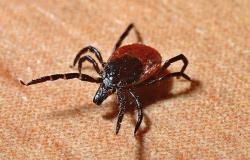Put like that, losing gray matter may sound worrisome, yet it happens to all of us during our development to refine our neural processing and make our brains more efficient. Although the expression ” Mommy brain ” is used to refer to the kind of brain fog and memory loss that some people say they experience during pregnancy, the brain changes appear to be adaptive. “You might find yourself not knowing where your keys are, but you might be much more alert about your offspring,” says Pritschet, who is particularly interested in changes to brain regions that contribute to social cognition by allowing us to take another person’s perspective.
The extent and types of brain changes during pregnancy are similar to what other researchers have observed in adolescent brains during puberty, a period of life that is also controlled by hormones. Other researchers have also been able to determine whether a person has ever been pregnant, even decades later, using brain imaging data. So while we often hear that the brain stops developing around age 25, hormones appear to cause significant and lasting changes throughout our lives.
“These transformations in the brain are like permanent etchings that people carry with them for a long time,” Jacobs says.
By studying Chrastil’s brain, Pritschet and his co-authors confirmed that the volume of gray matter in the brain had decreased by more than 4% during pregnancy and that this decrease had persisted until the end of the study, two years after giving birth. Unlike previous studies, this one was able to show that the volume of gray matter decreased steadily from the first weeks of pregnancy, and that this decrease stabilized at the time of birth and persisted for years afterward. These changes were linked to the increase in the concentrations of two sex hormones, estradiol and progesterone, and did not affect an isolated area of the brain, but 80% of the brain regions. While some networks and areas evolved more quickly than others, the team does not yet know the consequences.
While the researchers expected to see a loss in gray matter volume, they were surprised to see changes in white matter, the bundles of nerve fibers that run through the brain and help neurons communicate with each other. White matter had strengthened, peaking in the second trimester of pregnancy, and then returned to its original state by the time of birth. Although their data don’t explain the consequences of increased white matter in the mother, similar changes in adolescents have been associated with improved cognitive abilities.
“Such transient results can only emerge in a study of this type, which involves many sessions throughout pregnancy,” says Elseline Hoekzema, a neuroscientist at the University Medical Center in Amsterdam, the Netherlands, who was not involved in the study.
Although the study only involved one participant, the team has already started performing MRI scans on other expectant mothers and continues to receive an impressive number of requests to participate.
“My goal with this single-subject study is to shout to the world that MRIs are safe for pregnant women. That’s very important,” Pritschet says.
“This study and others aimed at characterizing changes in the brain of pregnant women are essential to better understand perinatal mental disorders as well as the subclinical symptoms that can appear during this period,” says Susana Carmona, a neuroscientist at the Instituto de Investigación Sanitaria Gregorio Marañon in Madrid, Spain, who was not involved in the study.






